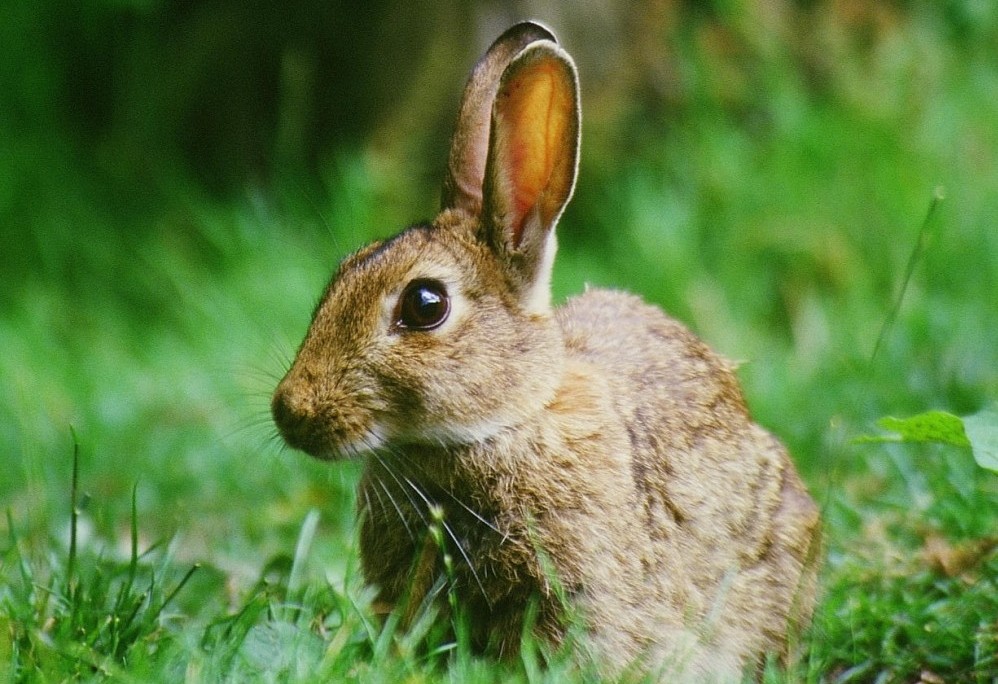Rabbit

Status
Naturalised and common
Population
36 million
Scientific name
Oryctolagus cuniculus
Rabbits were introduced into Britain from France by the Normans, as a source of meat and fur, and kept in managed warrens. Escapees were first recorded in the wild in the 14th century CE but populations only grew substantially after about 1750, favoured by changes in farming and the growth of gamekeeping, which kept predator numbers down. They are now a familiar sight in our countryside, often active during the day and present in high numbers. The colour of the coat varies but it is usually grey with reddish streaks on the back, and paler underneath. Their hair is dense and soft but when it gets wet, it loses its ability to retain heat, so rabbits try to stay dry at all costs. Rabbits have a large number of predators and have to stay alert to stay alive. They rely on their long ears to warn them of danger and rarely venture further than 200 metres from the safety of their burrows. Rabbit numbers have fluctuated greatly over the years; in the early 20th century there were around 100 million in England, Wales and Scotland, but in the 1950s, the viral disease myxomatosis killed over 99% of the wild population.
Head-body length: 30 – 40cm
Ear length: About the same length as their head
Weight: 1.2 – 2kg
Lifespan: Only about 10% of wild rabbits survive their first year and few live beyond two years. Captive rabbits can reach ten years
Reproduction
Rabbits give birth to 3 – 7 young (kittens) per litter and, if the weather is favourable, females can have litters every 5 – 6 weeks from February to August. The young are born blind, deaf and almost hairless; they can open their eyes after ten days and are weaned at about 25 days. A rabbit can breed from the age of four months.
Diet
Grasses, cereal crops, root vegetables and young shoots of meadow plants. In winter, they eat the bark of small trees.
Habitat
The most suitable habitats for a rabbit are areas of short vegetation close to woodland or banks suitable for burrows. Lighter soils and well-drained grassland support the greatest numbers of rabbits.
Predators
Foxes, mustelids such as stoats and weasels, badgers and buzzards.
Threats
Disease (Rabbit Haemorrhagic Disease and Myxoma virus).
Conservation status
GB Red List: n/a; Near Threatened (NT) globally.
Naturalised and common. The species doesn’t have a conservation listing in GB but globally is Near Threatened (NT).
GB population size and distribution
GB population 36,000,000. The rural population has fallen by two-thirds (67%) between 1995 and 2022, but in the last five years, the decline has been less steep. In urban areas, the population has fallen by around a third (36%) since 2004, as seen in PTES’ Living with Mammals survey.
Did you know?
Within a warren, groups of two to eight adults form, with males and, less so, females, establishing separate pecking-orders. Dominant males father the majority of offspring in their group, while dominant females obtain the best nest sites.
